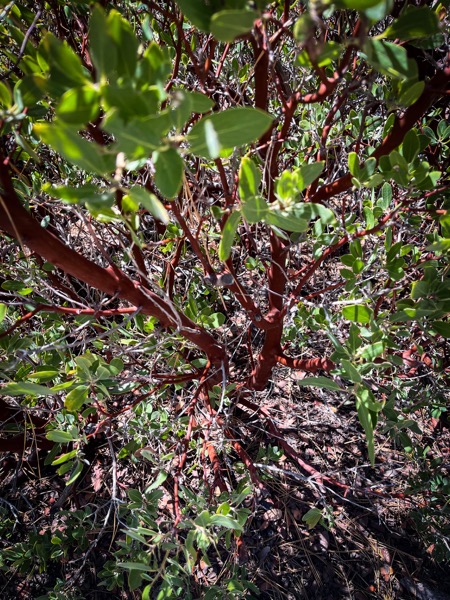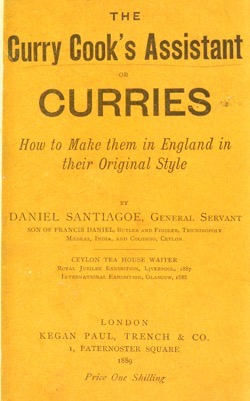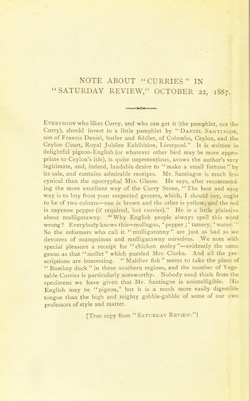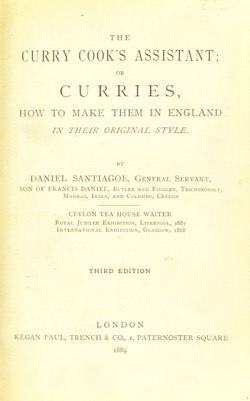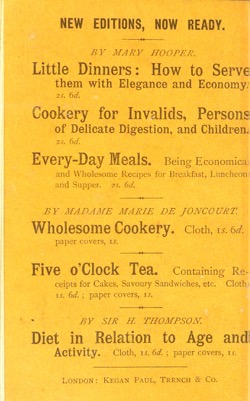What might you find in these old cookbooks? What special recipes have been handed down to you? Share in the Comments!
NOTE ABOUT “CURRIES” IN “SATURDAY REVIEW,” OCTOBER 22, 1887.
Everybody who likes Curry, and who can get it (the pamphlet, not the Curry), should invest in a little pamphlet by “Daniel Santiagoe, son of Francis Daniel, butler and fiddler, of Colombo, Ceylon, and the Ceylon Court, Royal Jubilee Exhibition, Liverpool.” It is written in delightful pigeon-English (or whatever other bird may be more appropriate to Ceylon’s isle), is quite unpretentious, avows the author’s very legitimate, and, indeed, laudable desire to “make a small fortune” by its sale, and contains admirable receipts. Mr. Santiagoe is much less cynical than the apocryphal Mrs. Glasse. He says, after recommending the more excellent way of the Curry Stone, “The best and easy way is to buy from your respected grocers, which, I should say, ought to be of two colours — one is brown and the other is yellow, and the red is cayenne pepper (if required, hot curries).” He is a little plaintive about mulligatawny. “Why English people always spell this word wrong ? Everybody knows this — mollagoo, ‘ pepper ; ’ tanney, ‘ water.’ ” So the reformers who call it “ mulligatunny ” are just as bad as we devotees of mumpsimus and mulligatawny ourselves. We note with special pleasure a receipt for ‘ ‘ chicken moley ” — evidently the same genus as that “mollet” which puzzled Mrs. Clarke. And all the prescriptions are interesting. “ Maidive fish ” seems to take the place of “ Bombay duck” in these southern regions, and the number of Vegetable Curries is particularly noteworthy. Nobody need think from the specimens we have given that Mr. Santiagoe is unintelligible. His English may be “pigeon,” but it is a much more easily digestible tongue than the high and mighty gobble-gobble of some of our own professors of style and matter.
[True copy from “ Saturday Review.”]
* A portion of each sale from Amazon.com directly supports our blogs** Many of these books may be available from your local library. Check it out! † Available from the LA Public Library
